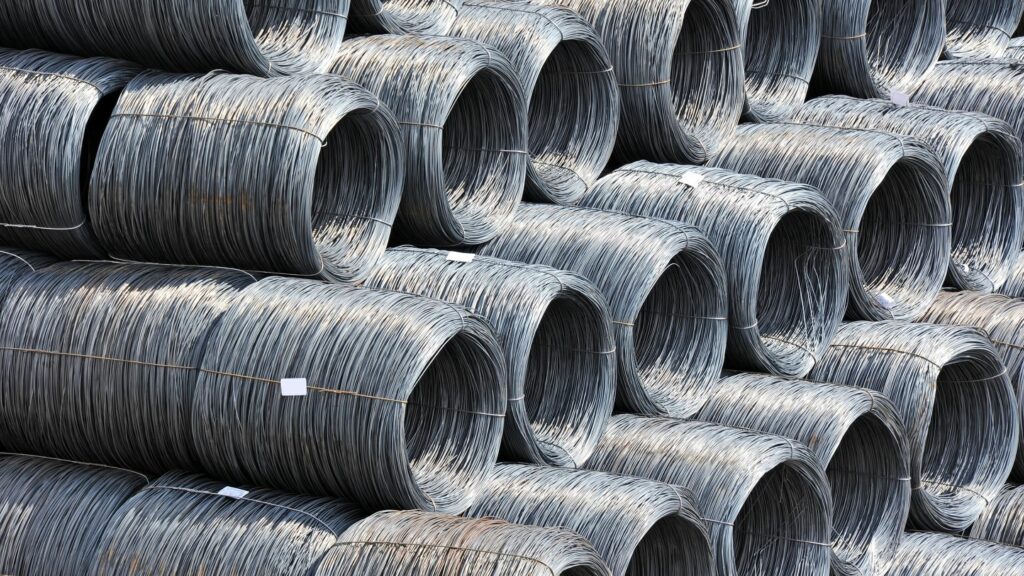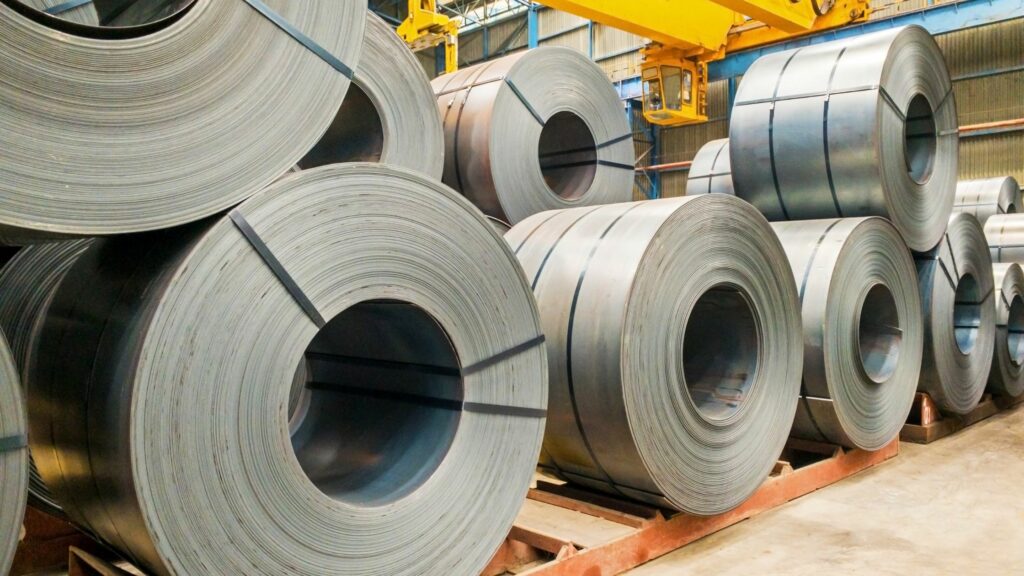Physical Address
304 North Cardinal St.
Dorchester Center, MA 02124
Steel is an essential material in construction, manufacturing, and various industries. Understanding how bulk steel shipping operates is crucial for effective supply chain management and economic planning.

Bulk steel shipping involves transporting large quantities of steel products, which include finished and semi-finished items. Such products range from steel coils and plates to bars, beams, and specialized forms like direct-reduced iron.
This article serves as a comprehensive guide. It explores essential aspects of bulk steel shipping, including product types, logistics, and advantages. It also addresses the challenges faced in this industry and outlines effective management strategies.
Steel bulk shipping is crucial for the global steel supply chain. It facilitates efficient transport of steel products, such as structural steel and steel coils, from manufacturing sites to distribution centers or end-users. Bulk carrier ships, specifically designed for dry bulk cargo, carry these materials worldwide.
Safe unloading at destination ports requires specialized equipment. Compliance with safety and environmental regulations is vital, ensuring adherence to international conventions like MARPOL. This prevents pollutants like oil and cargo residues from being released during shipping.
Different steel products have unique stowage factors, typically ranging from 1.5 to 3.5 m³/MT. Proper calculation based on product dimensions and packaging is essential for efficient shipment. The demand for steel is on the rise. Global consumption is expected to grow by 2.2% in 2023, primarily due to infrastructure projects and economic expansion in China and India.
Bulk carriers and merchant fleets play a pivotal role in meeting this demand. Reducing shipping costs and ensuring timely delivery remains a priority for shipping companies engaged in bulk trade. Shipping bulk steel cost-effectively relies on efficient loading methods and optimal use of bulk vessels.
Bulk shipping encompasses the transportation of steel products such as coils, plates, sheets, bars, and beams. Both semi-finished and finished steel products are involved. Specialized steel carriers, equipped with onboard cranes and adjustable tween decks, accommodate these unique requirements. Steel products must undergo thorough preparation and packaging to prevent damage during transportation. The choice of ship depends on the type, size, and quantity of steel products being loaded. Another very important form of steel products comes in the form of scrap metal or used steel products for recycling and reutilization in various industries.
Semi-finished steel products include hot-rolled coils, which are foundational materials for further processing into finished products. Finished steel products such as steel plates serve structural functions in shipbuilding and bridge construction. Steel sheets, having a thinner form, find application in automotive body parts and appliances. Both types are crucial in supporting industries like construction and manufacturing.
Billets serve as the foundational material for long products like bars, rods, and wire. Blooms are larger and thicker than billets, used for manufacturing beams, channels, and rails. Ingots are solid blocks used as primary raw material in steel production. Slabs are flat pieces employed in making plates, sheets, and coils.
Bulk shipping involves transporting steel coils, plates, and sheets. This requires bulk carriers or specialized steel carriers, as the type, size, and quantity influence the choice. Demand for these products has increased due to infrastructure projects. The World Steel Association noted a 0.4% rise in demand in 2022, underscoring the industry’s continuous need for such products.
Steel bars are cylindrical products used in construction, automotive, and machinery applications. Steel beams, such as I-beams and H-beams, provide support and strength in building projects. The demand for steel bars and beams has risen with increased infrastructure development. They are crucial for reinforcing concrete structures.
Shipping Direct-Reduced Iron requires strict safety and environmental compliance. Proper handling, storage, and waste disposal preventive measures reduce risk and environmental impact. Documentation like bills of lading and certificates of origin ensures smooth processes. Compliance with customs regulations at origin and destination ports is necessary to avoid delays and costs. Effective planning ensures the safe transportation of DRI within the steel supply chain.
Steel stowage factors are crucial in bulk shipping. These factors, indicating cargo density, influence bulk carrier design. For example, steel’s high density requires specific attention to vessel construction to handle weight limits while maintaining safety standards.
Accurate stowage measurements optimize the cargo load and ensure compliance with maximum draft regulations. Steel’s overall weight impacts bulk carriers’ structural design, necessitating robust builds to manage the dense cargo. Adhering to proper stowage factors prevents cargo shifting during transit, safeguarding both vessel and crew.
Key considerations for steel stowage include careful planning of cargo distribution to prevent imbalance. Understanding stowage factors aids in achieving efficient shipping operations. Here is a list of critical points:
These elements underscore the significance of stowage factors in the safe and efficient bulk shipping of steel products.
Bulk shipping involves the transport of large volumes of goods without packaging, often using bulk carriers. These vessels move items like iron ore, coal, and grain. Specialized bulk carriers include geared carriers with cranes, gearless carriers depending on port facilities, and self-unloading carriers with conveyor systems. Effective bulk shipping supports a gradual increase in fleet size, matching global demand with a typical shipbuilding time of two years.
Shipping rates for bulk cargo are per metric tonne. Dry bulk goods, measured by deadweight tonnes (DWT), guide freight charges based on cargo volume. Liquid bulk cargo, such as oil, uses tankers equipped with pumps and heating systems to maintain product integrity, requiring meticulous care to prevent leaks and contamination.
Proper stowage of steel slabs prevents shifting, utilizing dunnage and securing devices like chains or wire ropes. Choosing the right ship hinges on the cargo’s size, weight, and destination. Effective communication among shippers, carriers, and port authorities ensures successful shipments. Distance between ports impacts costs; longer distances increase fuel and transportation expenses. Freight class influences rates, with lower classifications often yielding cheaper charges.

Handling bulk cargo involves automated systems for efficient loading and unloading of homogeneous, unpackaged goods. Break bulk cargo, however, requires manual handling and specialized equipment due to its diverse nature. Steel plates need protective materials and secure strapping to prevent damage during shipment. Maintaining stability during loading is vital, with machinery such as excavators used to keep cargo level. Cleaning cargo holds before loading prevents contamination from previous shipments.
China stands as the largest steel producer worldwide, significantly contributing to global steel exports. The nation prominently exports steel plates, sheets, coils, and bars. Japan is renowned for producing high-quality steel products, supporting industries like automotive, construction, and electronics. South Korea maintains a robust steel industry, exporting a diverse range of items such as flat-rolled products, pipes, and tubes. Russia capitalizes on its abundant natural resources and developed steel sector to export varied steel products, including long and flat items, along with semi-finished products. The landscape of global steel exports continually evolves due to fluctuating production capacities and changing trade policies among countries.
Projected growth in iron ore shipments indicates a 1-2% rise in 2024 and a further 0.5-1.5% in 2025, fueled by increased global steel demand of 1.7% and 1.2% during these years. Despite an expected stagnation or slight decline in Chinese steel demand over the same period, Chinese iron ore imports saw a 5.5% year-over-year increase in early 2024. The vibrant demand for steel corresponds with a surge in infrastructure projects across multiple sectors, boosting the international seaborne iron ore trade. To secure adequate iron ore supplies for steel production, China employs strategies like import substitution and expanding domestic mining activities. Increased construction activities drive up steel product demand, shifting dry bulk shipping towards steel and coal transport.
Bulk shipping involves the transport of unpackaged cargo like grain or coal loaded directly onto ships. Break bulk shipping handles individual, oversized, or heavy items such as construction equipment. Differences lie in handling methods; bulk cargo uses automated systems, while break bulk requires manual handling. Break bulk shipping also often involves greater labor costs and time.
Break bulk shipping involves individually packaged items like boxes and crates, which need manual loading. In contrast, bulk shipping involves homogenous items loaded loose using automated systems. Cost-effectiveness is a key difference; bulk cargo benefits from economies of scale, while break bulk involves labor-intensive processes.
Break bulk handles items loaded piece by piece, such as machinery and equipment. Steel products, including coils and beams, often require this method due to special handling needs. Additionally, wood products and agricultural items like coffee beans utilize break bulk for transit safety.
Bulk shipping costs are calculated per ton and vary by company. Factors like distance and shipment size impact costs. Break bulk shipping incurs higher fees due to labor and extended port stays. Generally, bulk shipping remains cheaper due to quicker handling and economies of scale.
Bulk steel shipping ensures the transport of large quantities of steel products, providing a steady supply chain for the steel industry. This type of shipping employs specialized ships designed to handle different types and sizes of steel efficiently.
Proper packaging and preparation are crucial. They minimize damage risk and maintain product quality during transportation. Bulk carriers and specialized steel carriers optimize loading and unloading, reducing total shipping time.
The process enhances market reach. It connects manufacturing facilities with distribution centers and end users. This connection boosts operational efficiency.
Advantages of Bulk Steel Shipping:
These advantages contribute significantly to the steel industry’s supply chain and operational success.
Bulk steel shipping faces several challenges. Unloading requires cranes, forklifts, or other specialized equipment at destination ports. Adhering to safety and environmental regulations ensures prevention of accidents and pollution. Compliance with these protocols during unloading is crucial.
The shipping of bulk steel must also minimize environmental impact. International regulations like MARPOL mandate the prevention of pollutant release. Adherence to these standards is essential for sustainable operations. Efficient shipping relies on accurately determining stowage factors which vary by product dimensions, weight, and packaging.
Handling bulk steel involves increased times and specialized equipment. These often lead to multiple handlings, raising the risk of damage. Efficient logistics are necessary due to rising demand for steel driven by infrastructure projects. Optimizing these processes supports supply chain requirements.
Key Factors in Bulk Steel Shipping:
Address these challenges to improve the bulk steel shipping process.
Major dry bulk trades include grain, iron ore, and coal. These commodities represent 67% of the global dry bulk trading market. Grain supports food industries, producing staples like bread and pizza. Iron ore types such as limonite and hematite transform into iron for various industries after oxygen removal. Coal, vital for energy, follows mining and processing before usage. Minor bulks like cement and fertilizer complete the market, making up 33% of dry bulk trades.

Bulk shipping facilitates the movement of coal, grain, and other materials on international trade routes. The selection of bulk carriers depends on cargo type, port infrastructure, and trading routes. Effective logistics and communication ensure efficient operations. Shipping costs along trade routes depend on factors like distance, freight class, and cargo dimensions. Advancements in ship technology are adapting to global trading needs, promoting eco-friendliness and handling difficult conditions like ice.
The dry bulk shipping industry expands with rising demand for iron ore and coal. Increased steel production, linked to infrastructure projects, reshapes market dynamics. Geopolitical tensions, as highlighted by the IMF, pose risks to global demand for bulk commodities. Predictions show dry bulk demand growing by 2.5-3.5% in 2024. Cargo volumes are expected to rise by 0.5-1.5% in 2024 and 2025. The Chinese real estate sector and global trade trends significantly influence dry bulk shipping’s future.
Bulk shipping involves transporting goods in large volumes, especially unpackaged materials. Industries such as energy, farming, and mining frequently utilize this method to move commodities like crude oil, crops, and minerals. It is essential for companies, carriers, and port authorities to emphasize secure and efficient handling.
Bulk cargo is homogeneous and unpackaged, unlike break bulk cargo, which is individual and heterogeneous. Proper handling techniques differ between these cargo types. Efficient management can result in cost savings due to economies of scale and reduced handling times, optimizing logistics outcomes.
Break bulk shipping suits oversized or heavy items unsuitable for standard containers. Employing skilled labor and specialized equipment in this area improves operational efficiency. Innovations like double hull designs and self-unloading systems in bulk carriers streamline loading and unloading processes. Combined carriers provide flexibility, accommodating both bulk and different cargo types to meet varied shipper requirements.
Bulk shipping costs, measured in US dollars per ton, fluctuate based on cargo size, weight, and travel distance. Factors like packing, expedited services, and insurance can add expenses. Shipping costs average $2.5 per ton per 1,000 miles, with oil products contributing to 30-50% of total costs. Effective fuel management is crucial for cost control in bulk carriers.
The bulk steel shipping market adapts to rising steel demands resulting from infrastructure projects and construction growth. The World Steel Association recorded a 0.4% increase in steel demand in 2022, with expectations for a 2.2% rise in 2023, reaching 1,881.4 million tonnes. These figures emphasize the vital role of bulk steel shipping in global supply chains.
Adhering to environmental regulations remains crucial as shipping entities strive to limit pollution. Bulk steel shipments rely on efficient unloading at destination ports, using specialized equipment to uphold safety and sustainability standards. Optimizing stowage factors for steel products like coils, plates, and beams ensures safe, efficient shipping.
Future trends suggest persistent demand growth, necessitating innovation in shipping methods and technology. As global commitments to environmental responsibility strengthen, the industry will need to adapt further. Investments in greener technologies and compliance with international standards are inevitable. Bulk steel shipping’s evolution will depend on meeting these demands while balancing efficiency and ecological impact.
Bulk steel shipping involves transporting large quantities of steel, including both finished and semi-finished products, from manufacturing facilities to distribution centers or end-users.
Steel products such as coils, plates, sheets, bars, beams, billets, blooms, ingots, and direct-reduced iron (DRI) are commonly shipped in bulk.
Bulk shipping involves unpackaged cargo like coal and steel, loaded directly into the ship’s hold. Break bulk shipping handles oversized or heavy items individually, such as machinery or construction materials.
Challenges include unloading, which requires specialized equipment like cranes, compliance with environmental regulations such as MARPOL, and efficient stowage to prevent cargo shifting.

Stowage factors are critical as they determine cargo density, which impacts ship design, load efficiency, and safety during transport.
Bulk steel shipping is efficient for transporting large quantities, minimizes damage risk through specialized packaging, and optimizes operations by connecting manufacturers to consumers effectively.
China, Japan, South Korea, and Russia are among the leading steel exporters, supplying products like plates, coils, bars, and beams.
Global trade dynamics, including infrastructure projects and fluctuations in steel demand, impact shipping volumes and require adapting to changing market needs.
Costs are influenced by cargo type, distance, and fuel management. Average shipping costs are approximately $2.5 per ton per 1,000 miles.
Compliance is maintained by following international regulations like MARPOL, which mandate measures to prevent pollution during shipping.